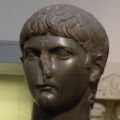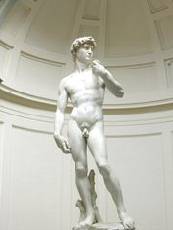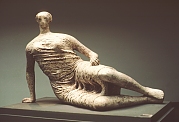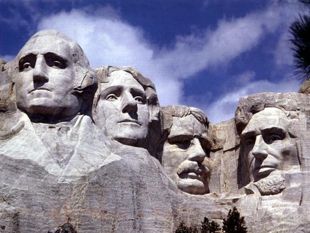Difference between revisions of "Sculpture"
(→Gallery) |
(→Gallery) |
||
| Line 87: | Line 87: | ||
[[Image:Supreme Court West Pediment.jpg|thumb|Supreme Court, West Pediment.]] | [[Image:Supreme Court West Pediment.jpg|thumb|Supreme Court, West Pediment.]] | ||
| + | |||
<br> | <br> | ||
*[[Architectural Sculpture Gallery]] | *[[Architectural Sculpture Gallery]] | ||
| + | *[[Famous Sculptures]] | ||
| + | |||
{{Clear}} | {{Clear}} | ||
Revision as of 18:59, April 5, 2009
Sculpture is a form of art. It also means a three-dimensional work of plastic art. Sculpture as an art form goes back to Prehistoric times. A sculptor is one who creates sculptures.
Sculpture, painting, architecture, music, literature, poetry, drama, dance, and cinema are some of the forms of Fine Arts.
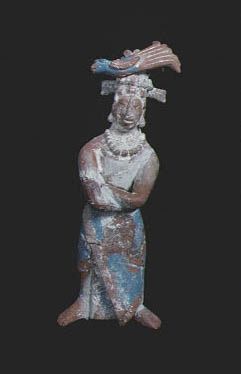
Sculptures are made of stone, marble, wood, glass, bronze, iron, clay, or any other hard or plastic material that could be transformed into a three-dimensional object. The shaping figures could be in the round or in relief. For this reason Sculpture is considered also one of the plastic arts.
The Greeks were blessed with a large supply of marble, which was what they used most in their sculptures. Bronze was also used in their artistic work of humans. [1]
The main types of sculpture are bust, miniature figure and statue.
Sculptures are also categorized by the process into four categories:
- Carving - Cutting away material from an existing piece of material.
- Modeling - Shaping of a pliable material.
- Casting - Using a mold to shape a molten substance.
- Assembling - Creating a sculpture by connecting or unifying in some way objects.
The sense of motion in painting and sculpture has long been considered as one of the primary elements of the composition. Alexander Calder.
Sculpture masterpieces are all over the world; many different techniques have been used in the many different regions (China, India, Egypt, Greece, Rome, Italy, etc.). Sculpture in the ancient Americas developed in Mexico and Peru. The Venus of Willendorf (Austria) is one of the earliest known sculptures ever made (Upper Paleolithic).

Famous Sculptors

The Classical period of Ancient Greece produced some of the most exquisite sculptures the world has ever seen... human anatomy was deemed worthy of being immortalized in stone or bronze... and proportion became the main preoccupation of sculptors and architects. [2]
Artists of this period of Greece are little known and most of their works were destroyed; fortunately the Romans made copies of the original works, (e.g. Discus Thrower). Praxiteles is considered one of the best artists of this period; his statue of Hermes, discovered at Olympia in 1877, has become famous throughout the world. Myron, Phidias, Polyclitus, Scopas, and Lysippus were also famous Greek sculptors.
The scale and ambition of classical Greek sculpture can be seen in a fragment of an early masterpiece. The famous Charioteer of Delphi (bronze statue also known as Heniokhos, sculptor unknown, commissioned by Polyzalus.), a life-size bronze, is the only surviving figure of a major group consisting of the chariot and its horses, a royal passenger on board with the charioteer, and an attendant slave boy. [3]
Romans also developed a sense of style aimed for a more realistic view. It is also very interesting to note that while Roman statues survive in great numbers, few names of Roman sculptors were recorded. [4]
The Florentine Donatello was an influential sculptor of the early Renaissance. In about 1415 he delivered the first free-standing Renaissance sculpture, The Statue of St. Mark. His most famous statue is the David (bronze, 1430). In 1453, his Equestrian Condottiero Erasmo da Narni was set up in Padua.
Michaelangelo is one of the most famous sculptors artists... a perfectionist in his art. The marble statues The David, The Pieta and The Moses are his famous masterpieces. The Pieta in Saint Peter's Basilica is the only work signed with his name. Michelangelo always thought of himself first and foremost as a sculptor. Other projects were undertaken reluctantly. On the contract for the painting of the Sistine Chapel ceiling, for example, he pointedly signed Michelangelo sculptore - "Michelangelo the sculptor". [5]
Leonardo da Vinci worked as a sculptor from his youth on. He started a bronze horse at Milan, Italy that could not be finished by war. It was going to be the largest equine statue ever built. The full-scale model of the horse in clay was unveiled in November 1493. Sculptures and studies to sculptures by LEONARDO da Vinci
The most important sculptor of the Baroque period was the Italian Gian Lorenzo Bernini (Napoli, 1598 - Roma, 1680). Some of his famous works are The Rape of Proserpina, Apollo e Dafne, Angelo Reggicartiglio, La Beata Ludovica Albertoni and Fontana del Tritone. Antonio Canova ( 1757 - 1822), an Italian Neoclassical sculptor made the famous reclining Venus Victrix of Pauline Borghese Bonaparte and the Bust of Napoleon. He sculpted also among others his well-known Three Graces from 1812 to 1816.
Auguste-René Rodin (1840 - 1917) is considered one of the greatest and most prolific sculptors of the 19th and 20th centuries; several of his most famous sculptures, such as The Thinker, The Kiss and The Three Shades, were derived from smaller reliefs contained within The Gates of Hell... He modeled portrait busts and large scale versions of well known people, such as the Monument to Victor Hugo. [6]
Daniel Chester French (1850 – 1931) was an American Neoclassical prolific sculptor. He is best known for the sculpture of a seated Abraham Lincoln. More recently Henry Moore (1898 – 1986), a British artist, became well known for his larger-scale abstract cast bronze and carved marble sculptures.

Antônio Francisco Lisboa (1730 or 1738 – 1814) is one of the most famous sculptors from Brazil. The Spanish painters, Pablo Picasso, Joan Miró and Salvador Dali were also sculptors. Francisco Zuñiga (born in Costa Rica, 1912 - 1998) was a Mexican sculptor; he began studying the collections of the Museum of Archaeology in Mexico City and the indigenous culture of the Southeastern Mexican people. In the sculpture of the Aztec and Maya, he found "the myth of life and death in aggressive, rounded figures with a heaviness, vitality, and formal equilibrium." In 1947, he became a citizen of Mexico and a state teacher. [7] Enrique Carbajal "Sebastián" (b. 1947), is a contemporary Mexican artist with some 150 monumental pieces in cities around the world.
The American sculptor Paul Manship (1885 – 1966) discovered archaic Greek sculpture while studying in Rome; he is considered a precursor to Art Deco; Dancer with Gazelles, (1916) and The Prometheus Fountain, at the Rockefeller Center, New York, (1934), are two of his most renown works. George Segal (New York, 1924 - New Brunswick, 2000), was an American painter and sculptor of Jewish ancestry. He was recognized with 20 awards included the 1999 National Medal of Honor. Segal was associated with the Pop Art movement.
Sculptors - Chronological Listing
Gallery
Terracotta warriors, Mausoleum of the First Qin Emperor, China.
Daibutsu - Buddha, Japan.
Temple d'Abou Simbel, Egypt.
Ramsés II, Luxor, Egypt.
The Sphinx, Egypt.
Yellow Dandelions Canada.
The Lost Pleiad, US.
Awakening, US.
Germanicus, Rome.
The Veiled Rebecca, Italy.
Paolina Borghese as Venus Victrix, France.
Three Walking Women, Mexico.
See also
- Art history
- Ancient art
- The Renaissance
- Statue of Zeus at Olympia
- Oriental art
- Famous American artists
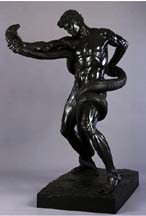
Athlete Wrestling a Python by Frederic Lord Leighton |
 The kiss by Rodin The kiss by Rodin
|
External links
- HISTORY OF SCULPTURE
- History of sculpture From ancient China, Greece and India to Gothic France and Victorian England.
- Sculptors
- Sculpture Numerous examples.
- The Sculpture Center Art of Ohio.
- Leonardo da Vinci Sculpture
- August Rodin
- Andrew Dunn web site With Henry Moore work.
- Andrea del Verrocchio
- Mary Ann Sullivan web site Bluffton University.
Draped Reclining Woman, Henry Moore. Mary Ann Sullivan photographer.
References
- ↑ Ancient Greek Sculpture
- ↑ Sculpture of the Greek Classical Period
- ↑ HISTORY OF SCULPTURE
- ↑ Roman Statues and Ancient Roman Sculpture
- ↑ Michelangelo: Sculpture
- ↑ Rodin
- ↑ Three Women Walking WICHITA STATE UNIVERSITY.














